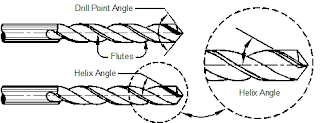1. Laser is produced by
(a) graphite
(b) emerald
(c) ruby
(d) diamond
2. Production of contours in flat blanks is termed as
(a) blanking
(b) piercing
(c) perforating
(d) punching
3. For ferrous materials, the helix angle of a drill is taken as
(a) 30⁰
(b) 45⁰
(c) 60⁰
(d) 90⁰
4. The from rake required lo machine brass by HSS tool is
(a) 15⁰
(b) 10⁰
(c) 5⁰
(d) 0⁰
5. Porosity in thin sections of a casting can be minimized by
(a) changing progressive solidification to directional solidification.
(b) changing directional solidification to progressive solidification
(c) use of open risers
(d) providing risers with a large Area/Volume ratio.
6. Large and heavy castings are made by
(a) green sand moulding.
(b) dry sand moulding.
(c) pressure moulding.
(d) machine moulding.
7. Blanking and piercing operations can be performed simultaneously on
(a) a simple die.
(b) progressive die.
(c) compound die.
(d) combination die
8. The tolerances produced by the investment casting process are of the order of
(a) ± 0.5mm
(b) ± 0.05 mm
(c) ± 1 mm
(d) ± 5 mm
9. Centering on a lathe can be done most accurately on
(a) four jaw chuck.
(b) three-jaw chuck.
(c) collet chuck.
(d) magnetic chuck.
10. The usual ratio of forward and return stroke in shaper is
(a) 2:1
(b) 1:2
(c) 2:3
(d) 3:2
Answers with explanation
- (c) A laser uses the synthetic ruby crystal for its laser medium is a Ruby Laser.“Laser” is an acronym for light amplification by stimulated emission of radiation. A laser is created when the electrons in atoms in special glasses, crystals, or gases absorb energy from an electrical current or another laser and become “excited.”
- (a) In blanking, the piece being punched out becomes the workpiece and any major burrs or undesirable features should be left on the remaining strip. Blanking is a shearing operation.
- (a) The helix angle is the angle between the leading edge of the land and the axis of the drill. Sometimes it is also called a spiral angle. The usual range of helix angles used in the drill is 20° to 35°. Large helix angle 45° to 60° suitable for deep holes and softer work materials. The small helix angle of less than 45° is suitable for harder and stronger materials. Zero helix angles are used in spade drills for high production drilling, micro‐drilling, and hard work materials.
- (d) Rake angle is a cutting edge angle that has a large effect on cutting resistance, chip disposal, cutting temperature and tool life. A positive rake angle is used for cutting soft and ductile material. A negative rake angle is used for cutting very hard or brittle material. A zero rake angle is used for machining brass material. At a low positive rake angle, a higher cutting force is required but with the increase of positive rake angle, a lesser amount of cutting forces and power is required which gives a better surface finish. But the tool becomes thin and weak.
- (c)
- (a) Green Sand Castings are castings made using wet sand or “green sand” moulds. The sand is not green in colour nor do the moulds use “greensand,” a greenish colour sandstone. Instead, the sand is called “green” because it has moisture in it (like green wood) before the sand dries out when molten metal is poured into the mould. What gives the sand moisture and helps the sand stick together when making moulds is the clay that is mixed in the sand. Bentonite clay and the sand are mixed together to provide strong moulds that can be created on an automated assembly line.
- (c) Compound Die Stamping is the process where the die separates or blanks the part from a steel strip in one stroke. A Compound Die will perform multiple cuts or punches in one stroke, as compared to multiple strokes. This is a very cost-effective method for stamping medium to high volume parts while keeping labour and die costs down. Compound Dies are often used to stamp simpler flat parts such as washers.
- (b) The investment casting process is capable of excellent, repeatable as-cast tolerances. With as cast capabilities of +/- three standard deviations when a single point is repeatedly measured.
- (c) Collet chuck. These are small chucks that fit into the headstock spindle and are used for holding bar stock (long bar or rods). These chucks are particularly useful in cases where accurate centring and quick setting are required.
- (d)
---
The study material for AMIE/B Tech/Junior Engineer exams is available at https://amiestudycircle.com




Comments